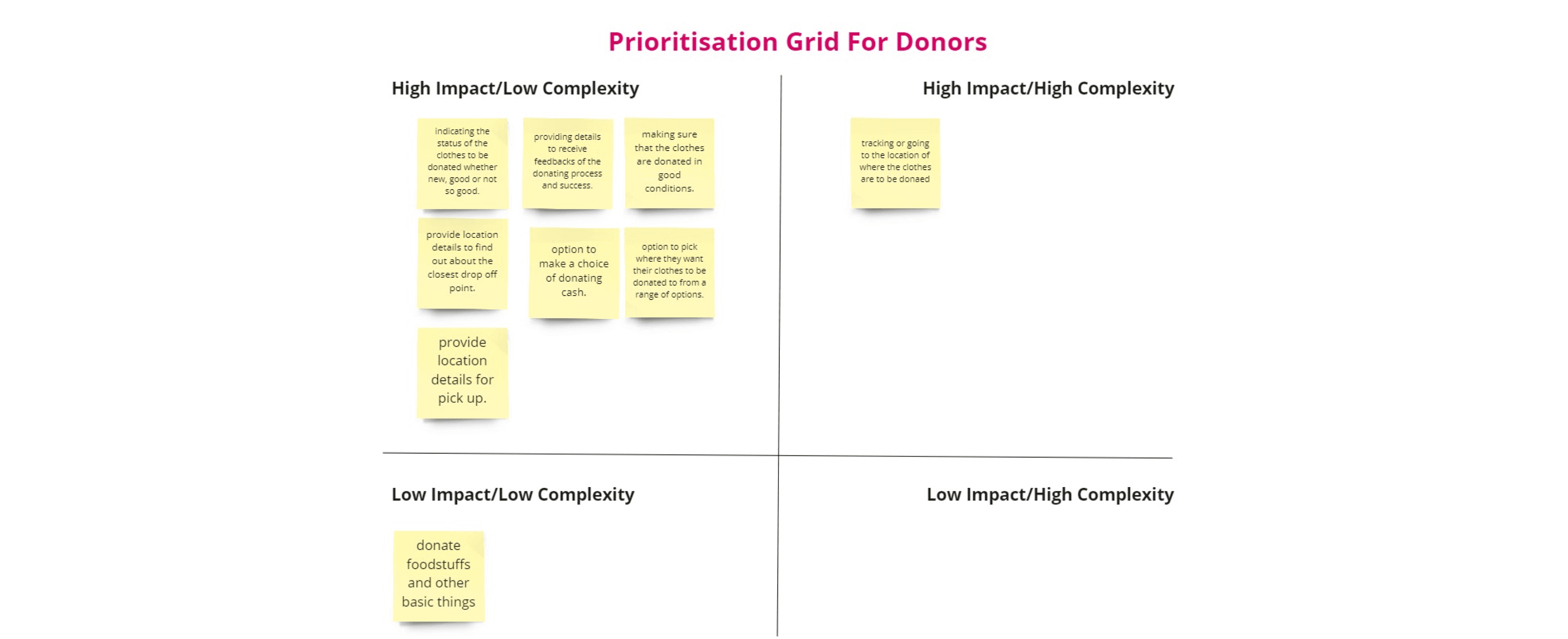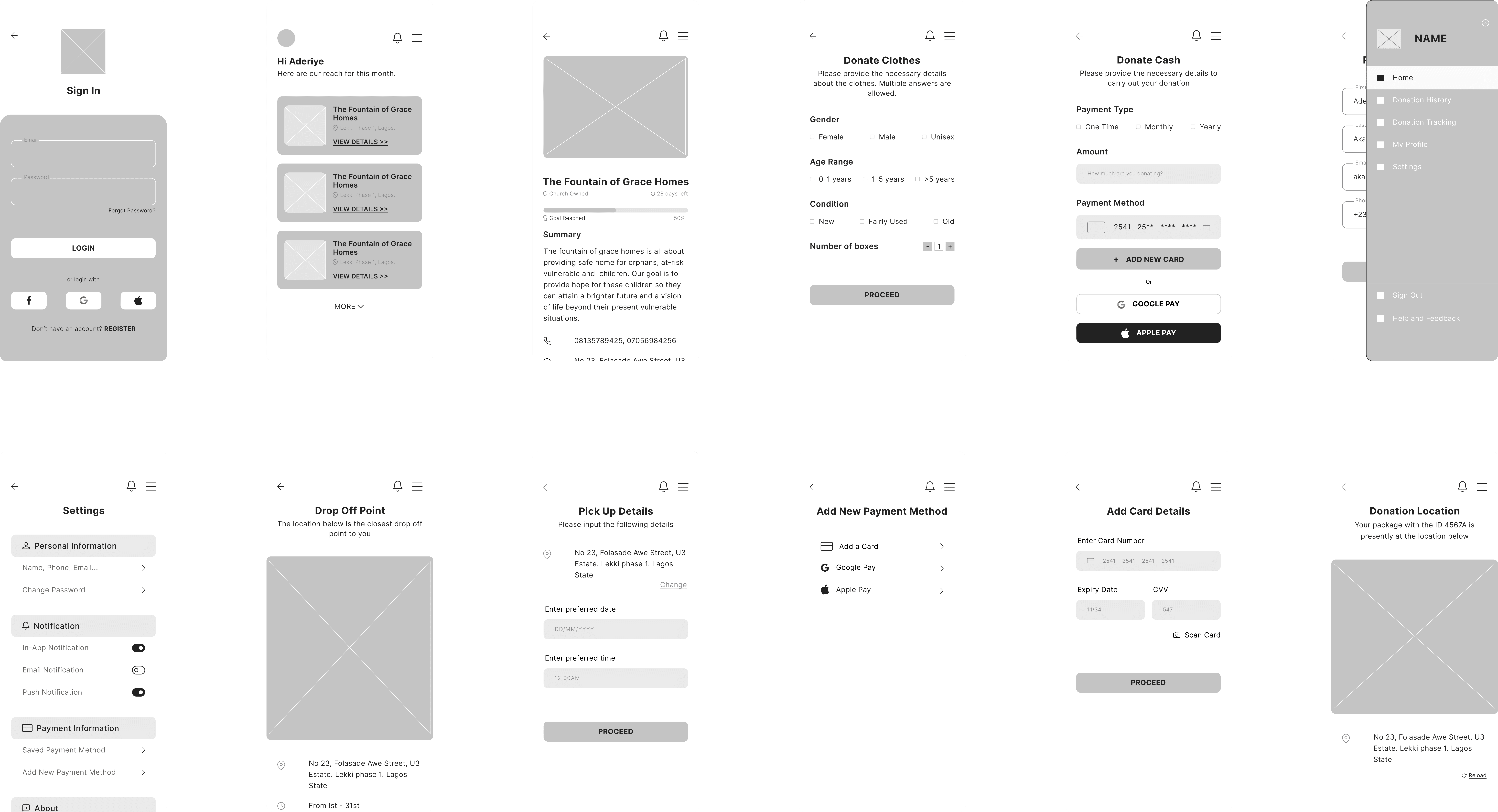Givingx
GivingX is a donation platform that enables individuals to easily contribute clothing and monetary donations from the comfort of their homes, promoting convenience and accessibility. Additionally, it prioritizes transparency and fosters an en
Client:
Zuri
Role:
UX/UI Designer
Year:
2021
View Prototype
Project Overview
The creation of GivingX stems from the aim to provide a seamless platform for users to donate old clothes conveniently and transparently. Users have the flexibility to choose donation destinations and opt for either pickup or drop-off services. Additionally, the platform offers donation tracking for user reassurance and provides an alternative for cash donations. Emphasizing the importance of addressing user needs, GivingX seeks to deliver solutions tailored to individual preferences for a more impactful user experience.
Problem Statement
Research findings indicate widespread underprivilege, with millions lacking access to basic necessities such as clothing and food.
Many individuals are eager to provide aid, particularly in the form of clothing donations, but struggle due to difficulties in locating underprivileged individuals and barriers posed by location.
Establishing a trustworthy platform for easy and convenient donations could significantly alleviate this problem.
Such a platform would bridge the gap between donors and recipients, facilitating seamless donation processes and increasing accessibility for both parties.
By addressing these challenges, the platform aims to facilitate greater donation accessibility and contribute towards mitigating the impact of underprivilege.
Goals
Enable users to make donations seamlessly from the comfort of their homes.
Provide donation tracking features to offer users transparency and assurance regarding the destination of their contributions.
Bridge the gap between donors and beneficiaries to improve the situation and livelihood of the less privileged.
Offer basic amenities and more to underprivileged individuals, enhancing their quality of life.
Ensure the application is user-friendly, straightforward, and aesthetically pleasing.
Solve user problems according to their specific needs, prioritizing personalized solutions.
Process
I made use of the design thinking approach which is a human-centered approach to innovation. It is anchored in understanding customer’s needs, defining the problem and identifying strategies and solutions that best solves the problem. I conducted extensive research on the real estate industry and competitors' websites to identify best practices and trends.
User interviews & research
Synthesis the findings
Ideating the solution
Craft a prototype with the main idea
Test with users to validate the idea
User Research
Carrying out research to solve a problem is all about making sure to understand the user’s pain, needs, emotions and empathize with the user which is the only way to be able to find the accurate solution to the user’s pain point.
I carried out a qualitative research by having interviews with about 5 potential users over video calls and was able to ask them questions to be able to understand how they feels, and think. A qualitative research is a more direct method to understanding a user because you can communicate directly with the user and even bodystorm.
Some of the questions asked are as follows
How often do you shop for clothes?
How long does it take you to get bored of an outfit and for what reasons?
What do you do with those clothes you get tired of or outgrow?
What experiences have you had when it comes to donating clothes?
How often do you donate and why?
What difficulties have you encountered when it comes to donating?
How does donating makes you feel?
Have you ever made use of any online donating platform? If yes, which one and how was the experience?
Define
After the interview, I was able to understand some of the users. From the information gathered from this stage, I was able to synthesize and identify painpoints, personas and the problem to be solved which is the main aim of the define stage.
Ideate
After understanding the user’s problems, emotions, needs and identifying their pain points, I started to generate ideas on how best to solve the user’s problem and eliminate their pain points. I decided to create a mobile application that bridges the gap between donors and beneficiary, where all the difficulties generated from the define stage were targeted at and solved making sure to make the process as seamless as possible.
User Persona
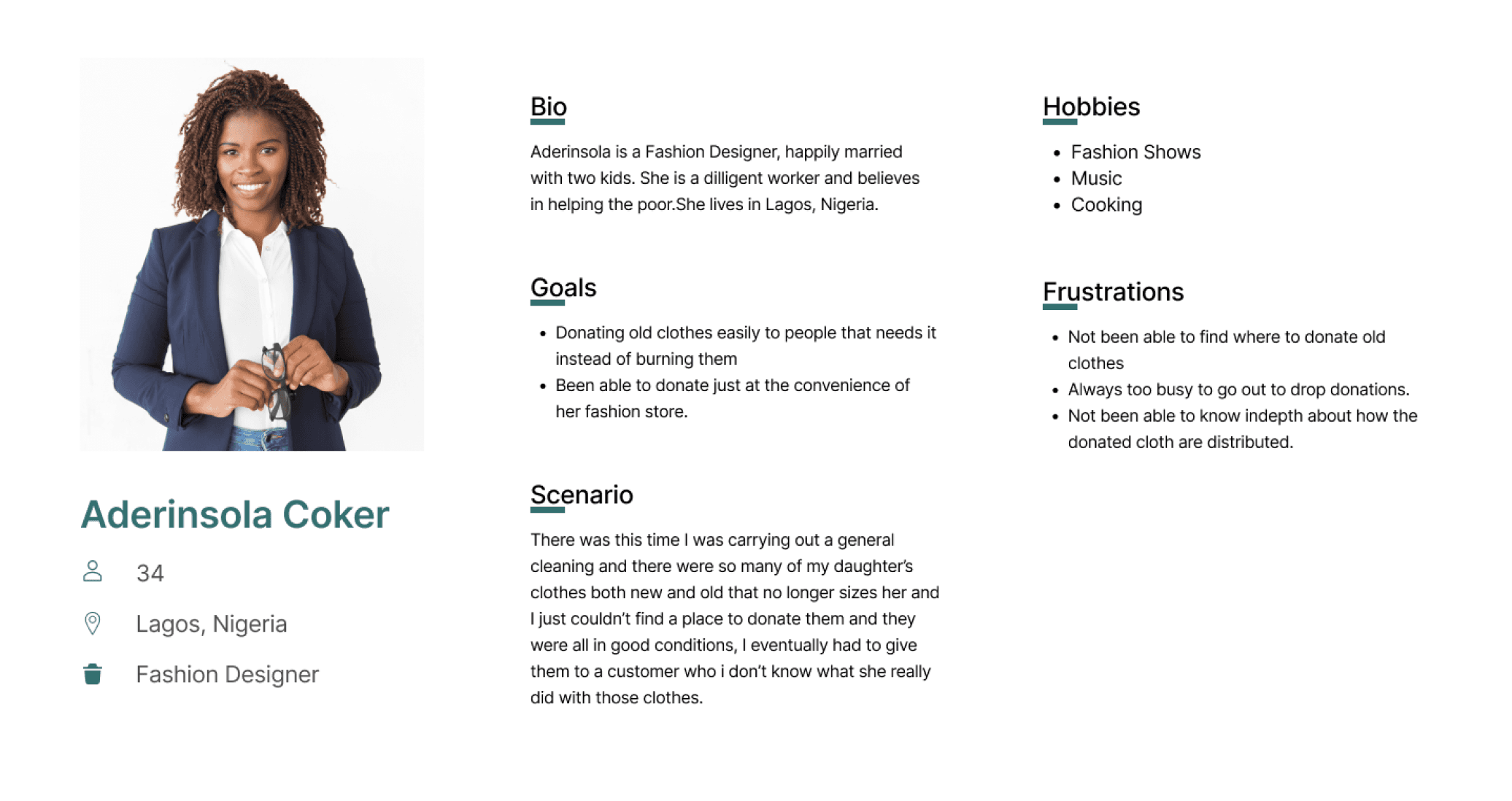
How may we solve the problem
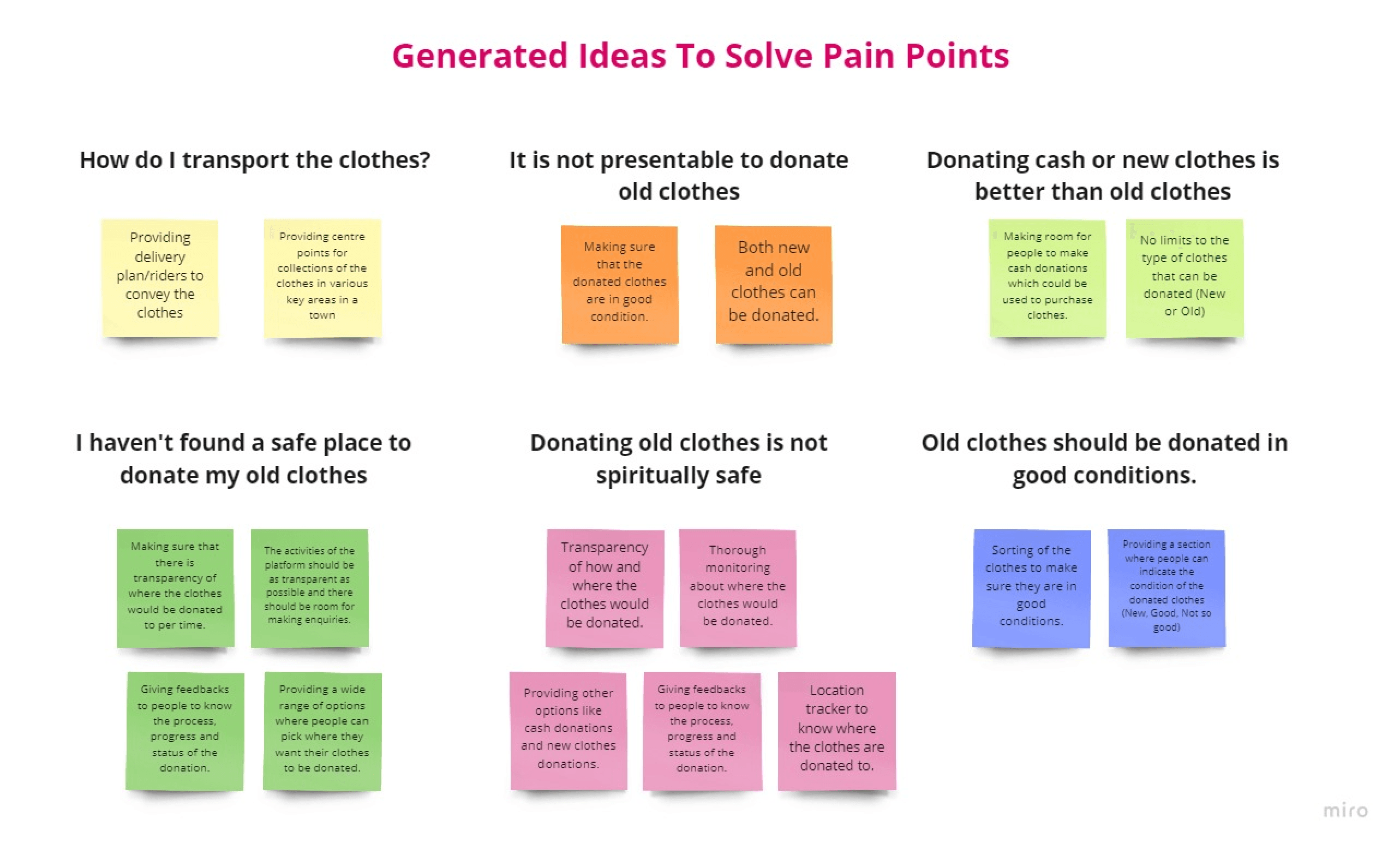
Prioritization Grid
After brainstorming and coming up with ideas to solve the user’s pain point, the user’s need and experience is the main goals, so I broke all the ideas into 4 different section to be able to prioritize and focus on the important ones. The 4 sections are as follows;
User Flow
A Userflow is a visualization of how a customer or user interacts with a product. It serves as a starting point of determining what to prototype and how to go about it. I creaated both to visualize and understand better how the user would interact with the product.
Wireframes
Style Guide
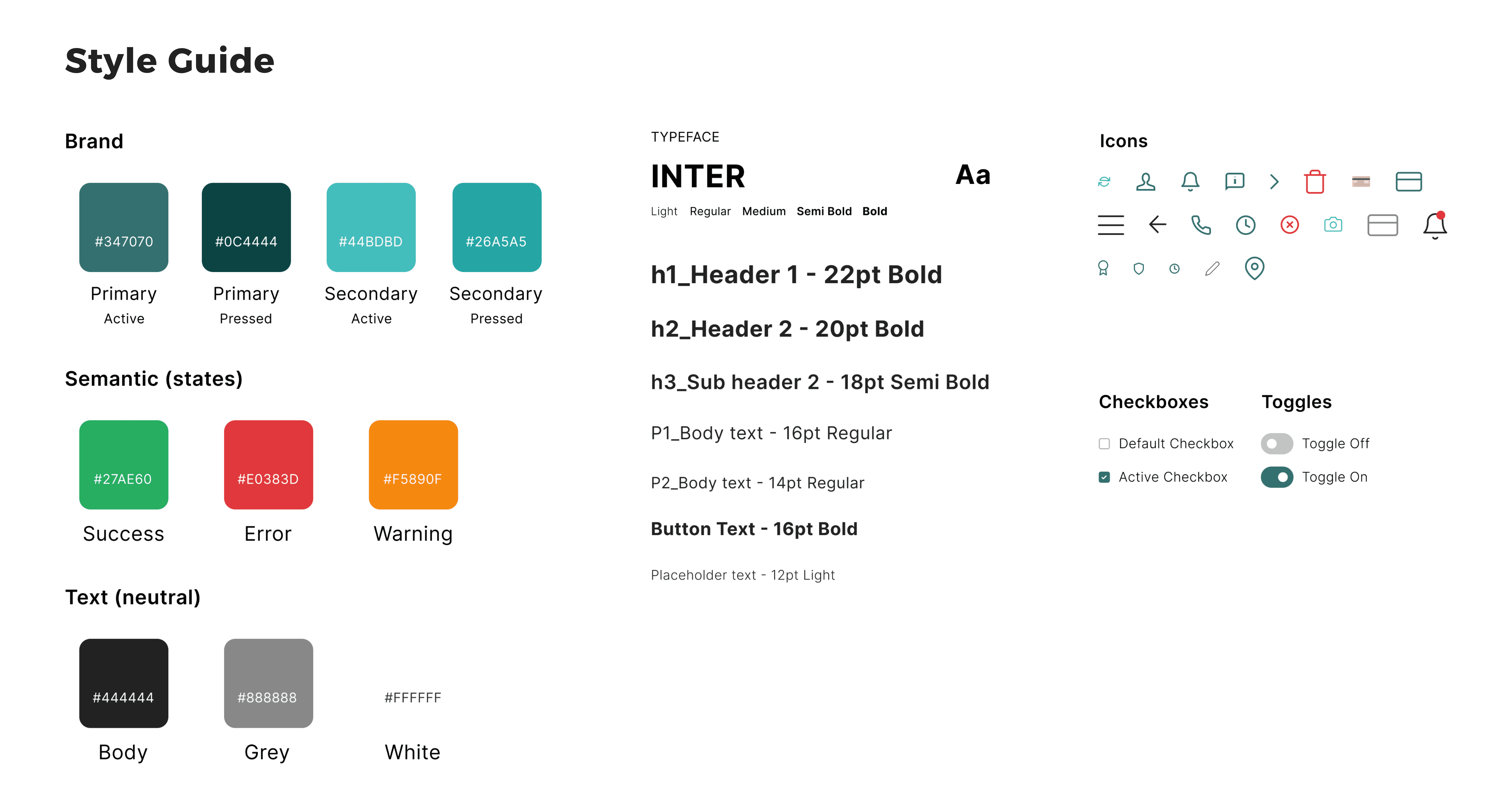
High Fiidelity
Key Takeaways
While working on this project, I was exposed to some realities and i got to learnt quite a number of things;
Identifying User Needs: Through user interviews and research, understanding user pain points, emotions, and needs is crucial for developing effective solutions.
Human-Centered Design: Applying the design thinking approach emphasizes empathy, defining problems based on user experiences, and generating solutions that truly cater to user needs.
Prioritization and Focus: Breaking down ideas into categories based on impact and effort helps in prioritizing features for development, ensuring the focus on high-impact, user-centric elements.
Balancing Convenience and Impact: Offering users a seamless and convenient experience while also addressing a significant social issue demonstrates a balance between user satisfaction and social impact.
Continuous Iteration: The iterative process, including testing with users, allows for refining and improving the platform, ensuring it aligns closely with user expectations and needs.


